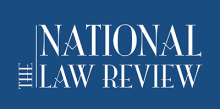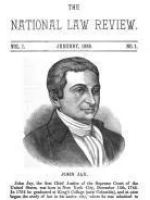In January, the National Law Review had pleasure of attending the Annual Marketing Partner Forum in beautiful Rancho Palos Altos, California. Programing was provided by the Legal Executives Institute at Thomson Reuters and featured over 15 hours of dynamic workshops. Hundreds of marketing partners, managing partners, in-house counsel and senior-level marketing and business development professionals were in attendance.
The “New Competition” program featured emerging legal technologies within Silicon Valley. Catherine Hammack of Jurispect, Monica Zent of Foxwordy, and Daniel Lewis of Ravel Law each showcased their innovative technologies and shared their thoughts as to where innovation is taking the legal industry in 2015.
“Jurispect will help fundamentally transform how companies operate by providing organizations with a real-time analytical view of both exposure and opportunities to take proactive steps to manage legal and regulatory risk.” - Catherine Hammack
Catherine was present on two momentous occasions in U.S. financial history: as an intern at Arthur Anderson when Enron was indicted, and as a first-day associate at Bingham McCutchen the day Lehman Brothers filed for bankruptcy, and the start of the financial crisis in 2008. Following her time at Bingham as a financial litigator, she transitioned to join Google’s Policy team, where her perspective on legal services dramatically changed.
As Catherine elaborated in a post-conference interview: “There was a huge gap between the way law firms traditionally provide counsel and the way companies need information to make business decisions.” She was surrounded by engineers and data scientists who were analyzing vasts amounts of data with cutting edge technology. Catherine became interested in adapting these technologies for managing risk in the legal and regulatory industries. Inspired by Google’s data-driven decision making policies, she founded Jurispect.
Jurispect is a tool that companies can use to track legal and regulatory changes relevant to their industry, and possibly to identify risks earlier on to help avoid future Enrons and Lehman Brothers. Currently, Jurispect is geared toward companies in the financial services and technology space, and will be expanding into other regulated industries in the very near future. Key decision makers in the corporate legal, compliance and risk departments of companies are benefitting from Jurispect’s actionable intelligence. The user’s experience is customized: Jurispect’s technology adjusts based on user profile settings and company attributes. As the user continues to utilize Jurispect, its algorithms continuously calibrate to improve the relevancy of information presented to each user.
Jurispect’s team of seasoned experts in engineering, data science, product management, marketing, legal and compliance collaborated to develop the latest machine learning and semantic analysis technologies. These technologies are used to aggregate information across regulatory agencies, including sources such as policy statements and enforcement actions. Jurispect also analyzes information in relevant press releases, and coverage by both industry bodies and mainstream news. The most time-saving aspect of Jurispect are the results that coalesce into user-friendly reports to highlight the importance and relevance of the regulatory information to their company. Users can view this intelligence in the form of notifications, trends, and predictive analytics reports. Jurispect makes data analytics work for legal professionals so they spend less time searching, and more time on higher level competencies. As Catherine elaborated, “We believe that analytics are quickly becoming central to any technology solution, and the regulatory space is no exception.”
“Foxwordy is ushering in the era of the social age for lawyers and for the legal industry.” - Monica Zent
Monica is an experienced entrepreneur and had already been running a successful alternative law firm practice when she founded Foxwordy. Foxwordy is a private social network that is exclusively for lawyers. Monica reminded the audience that we are, remarkably, ten years into the social media experience and all attorneys should consider a well rounded social media toolkit that includes Foxwordy, Twitter, and LinkedIn.
However, as Monica elaborated in a post-conference interview, LinkedIn, for example, “falls short of the needs of professionals like lawyers who are in a space that is regulated; where there’s privacy, [and] professional ethics standards.” As an experienced attorney and social seller, Monica understands that lawyers’ needs are different from other professionals that use the more mainstream and very public social networks, which is why she set out to create Foxwordy.
Foxwordy is currently available to licensed attorneys, those who are licensed but not currently practicing but regularly involved in the business of law, certified paralegals, and will eventually open up to law students. Anyone who fits the above criteria can request membership by going to the homepage, and all potential members go through a vetting process to ensure that they are a member of the legal community. At its inception, the Foxwordy team expected to see more millennials and solo practitioners taking advantage of the opportunity to network on Foxwordy. Those populations have joined as expected, but what was surprising is how the product resonated across all demographics, positions and segments of the legal industry. Foxwordy has seen general counsels, in-house counsels, solo practitioners, major law firm partners, law school deans, judges, politicians and more become members.
Foxwordy is currently available to join and will be emerging out of public beta around summertime this year. As Monica said during her presentation “Time is the new currency”, and what the Foxwordy team has found via two clinical trials is that engaging Foxwordy saves lawyers an average of two hours per day. Membership includes all the core social features such as a profile page, connecting with others, the ability to ask questions and engage anonymously, exchange referrals, and exchange other information and resources. Free members experience all the core functions fully and there is a premium membership that is available with enhanced features and unlimited use of Foxwordy. In the closing thoughts of her post-conference interview, Monica shared that “the ability to engage anonymously and discreetly, yet at the same time collaborate with our legal colleagues and engage with them on a social level has been very powerful.”
“There is an amazing opportunity to use data analytics and technology to create a competitive edge for lawyers amidst all of this information…” - Daniel Lewis
Data analytics and technology has been used in many different fields to predict successful results. In his presentation, Daniel pointed out that fields traditionally considered more art than science have benefitted from the use of data analytics to predict accurate results.
Having conducted metrics-based research and advocacy while at the Bipartisan Policy Center, and observing how data-driven decision making was being used in areas like baseball and politics, Daniel was curious why the legal industry had fallen so far behind. Even though the legal field is often considered to be slow moving, there are currently over 11 million opinions in the U.S. judicial system with more than 350,000 new opinions issued per year. There is also a glut of secondary material that has appeared on the scene in the form of legal news sources, white papers, law blogs and more. Inspired by technology’s ability to harness and utilize vast amounts of information, Daniel founded Ravel Law to accommodate the dramatically growing world of legal information.
Ravel Law is optimized for all lawyers across the country. Currently, thousands of associates, partners, and in-house counsel are using Ravel. Ravel has as also begun working with 30 of the top law schools around the country, with thousands of law students learning how to use it right alongside legal research staples such as Westlaw and LexisNexis. Professors and students around the country have also independently discovered Ravel and are using and teaching it. When asked why he works with law schools, Daniel said “We work with schools because students are always the latest generation and have the highest expectations about how technology should work for them.” Students have given the Ravel team excellent feedback and have grown into a loyal user base over the past few years. Once these students graduate, they introduce Ravel to their firms. Ravel’s user base has been growing very quickly and they have only released a small portion of what their technology is ultimately capable of.
Ravel’s team of PhDs and technical advisors from Google, LinkedIn, and Facebook, has coded advanced search algorithms to determine what is relevant, thereby enhancing legal research’s effectiveness and efficiency. Ravel provides insights, rather than simply lists of related materials, by using big data technologies such as machine learning, data visualization, advanced statistics and natural language processing. In a post-conference follow up Daniel elaborates: “Our visualizations then show how the results connect in context, helping people understand the legal landscape very rapidly as well as find needles in the haystack.” Ravel guides users toward analysis of relevant passages in a particular case, without navigating away from the original case or conducting a new search. Daniel and his colleagues will be launching more new features this year and are looking forward to continuing to “transform how attorneys search and understand all legal information.”




 />i
/>i

